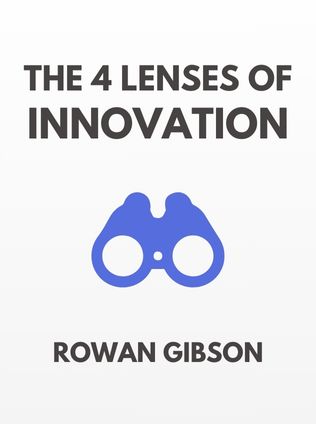
The Four Lenses of Innovation
A Power Tool for Creative Thinking
By Rowan Gibson
Published 03/2015
About the Author
Rowan Gibson is widely recognized as one of the world’s foremost thought leaders on business innovation. With over two decades of experience, he has worked with some of the largest and most successful companies globally, helping them to seize new growth opportunities, create new markets, and transform entire industries by embedding innovation into their management systems. His work focuses on empowering organizations to unlock their creative potential and systematically innovate.
Main Idea
The core idea of The Four Lenses of Innovation is that innovation is not an esoteric art but a systematic, methodical process that can be harnessed by anyone. By identifying and understanding four key business perspectives — Challenging Orthodoxies, Harnessing Trends, Leveraging Resources, and Understanding Needs — Gibson provides a comprehensive framework for generating groundbreaking ideas and driving radical business innovation.
Table of Contents
- The Mind of the Innovator
- The Power of Patterns
- Looking Through the Four Lenses
- How Big Ideas Are Built
The Mind of the Innovator
Gibson begins by exploring the historical evolution of the concept of innovation, debunking the myth that creativity is a divine gift. He highlights how, starting from the Renaissance, human creativity was increasingly seen as a result of education and individual capabilities rather than divine intervention. This shift in perspective led to an explosion of technological, artistic, and cultural achievements, driven by a new way of thinking that was open to questioning and reinventing the status quo.
Challenging Orthodoxies is the first lens of innovation. Innovators have always challenged deeply entrenched beliefs and assumptions. Gibson uses historical examples to illustrate this point, such as:
- Copernicus, Galileo, and Kepler questioning the geocentric model of the universe.
- Machiavelli redefining the principles of politics.
- Brunelleschi revolutionizing architecture with the design of the Florence Cathedral dome.
This contrarian spirit is crucial for innovation as it allows individuals to see possibilities that others miss. Gibson explains, "Almost by definition, these Renaissance revolutionaries were nonconformists who were willing to contest previously held truths."
Another key aspect of this lens is the ability to envision alternatives. When conventional wisdom is questioned, it opens the door to new ways of thinking and new possibilities. This ability to think differently is a hallmark of successful innovators.
The Power of Patterns
Innovation, according to Gibson, is fundamentally about pattern recognition. Human thought is based on patterns, and our ability to recognize and apply these patterns is what enables us to make sense of the world. However, these fixed patterns can also limit our ability to think creatively. The key to innovation is to step back from these existing patterns and look at them from fresh perspectives.
Gibson explains that successful innovators are those who can alter the patterns of thinking in their minds, rethinking conventional objects and situations to discover new opportunities. He emphasizes the need for a systematic methodology to enhance our natural creative abilities, which is where the Four Lenses of Innovation come into play.
Gibson's exploration of patterns includes understanding how cognitive maps and schemata are formed in our minds. These mental frameworks help us navigate the world efficiently, but they can also become rigid and hinder innovative thinking. To innovate, we must learn to break free from these constraints and see the world anew.
Looking Through the Four Lenses
The Four Lenses of Innovation provide a structured approach to developing new ideas:
Sign up for FREE and get access to 1,400+ books summaries.
You May Also Like
The Subtle Art of Not Giving a F*ck
A Counterintuitive Approach to Living a Good Life
By Mark MansonRich Dad Poor Dad
What the Rich Teach Their Kids About Money - That the Poor and Middle Class Do Not!
By Robert T. KiyosakiHow To Win Friends and Influence People
The All-Time Classic Manual Of People Skills
By Dale CarnegieQuiet: The Power of Introverts
The Power of Introverts in a World That Can't Stop Talking
By Susan Cain



















